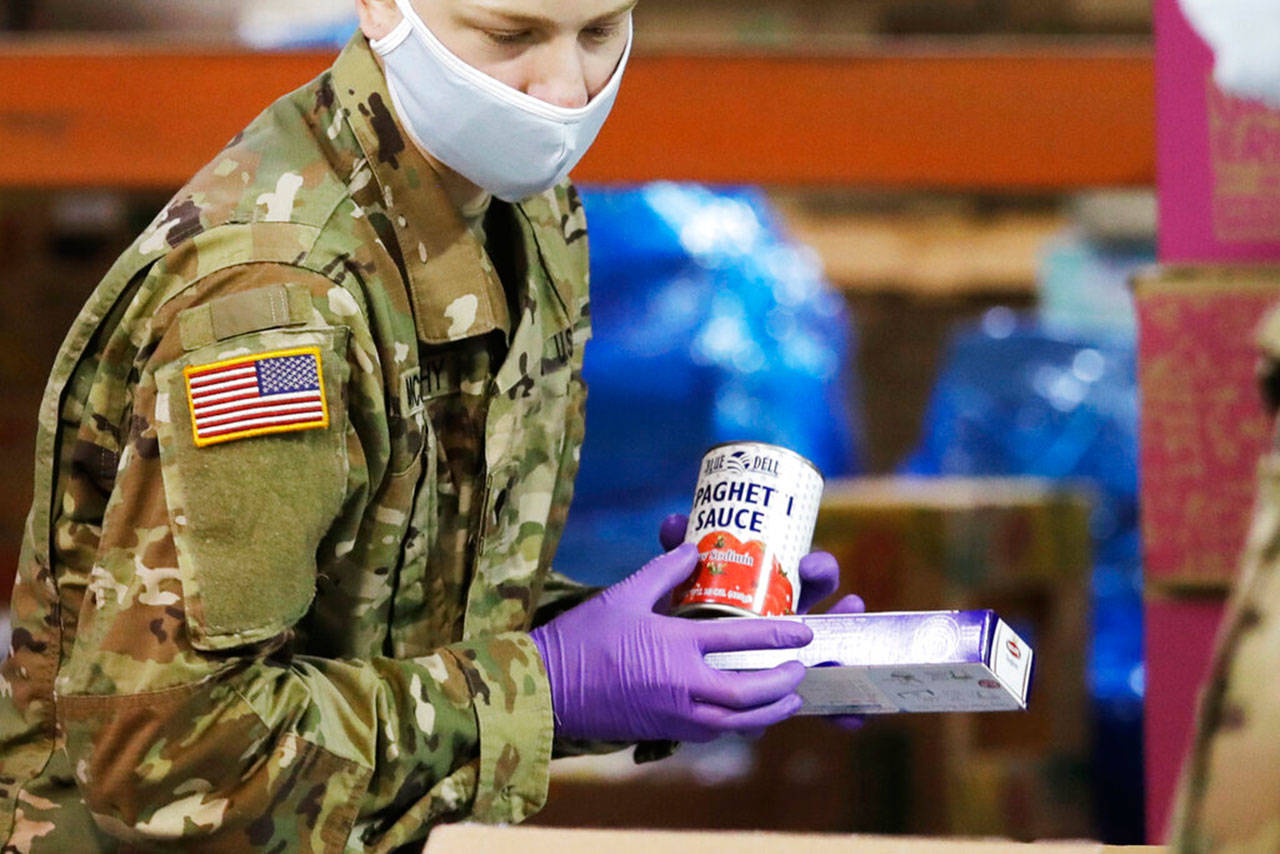By The Herald Editorial Board
We’re in for a long slog.
About two weeks in to Gov. Jay Inslee’s “Stay Home, Stay Safe” orders — which closed all but essential businesses and mandated people remain home with only bare exceptions in order to limit exposure to the COVID-19 coronavirus outbreak — the governor had two messages Thursday during a news conference: It’s working, but “We’re not out of the woods yet.”
The stay-at-home orders have now been extended until May 5, and the governor left open the possibility that they might have to be extended even past that date.
A return to normalcy really is up to the virus, but also is up to us in how well we comply with social-distancing rules that will limit our exposure and slow the spread of the disease.
For most of us, it’s in our nature to look for bright spots or make light of our new home-bound routines: sweatpants attire during virtual meetings with co-workers; finding time to bake bread, delve into the stack of books by the bedside or get around to long-ignored honey-do projects; and, certainly, more time with immediate family.
But the very real sacrifices that we all are making are never far from mind. Businesses in our communities are shuttered, and some may not reopen. People are out of work or have seen their hours — and paychecks — reduced. Students, even with the best efforts of parents and teachers, still are missing significant educational, social and extracurricular opportunities. Our state and national economies are suffering losses that will be felt long after the outbreak has ended. And, even with the connections provided by social media, we are achingly separated from others in our families, from our friends, our community groups and our churches.
Tell us that this is worth it, that there’s a reason for us to do our best to cope with these sacrifices for another month. Or longer.
[[Support our Snohomish County journalism. Subscribe to The Herald.]]
There is hope in data and in the assessments of experts that extensive social-distancing measures are working, that we are flattening that now-ubiquitous curve, that we are slowing the spread of the virus. Those states that have told residents to stay at home, with Washington and California as leading examples, are showing improvement.
“California and Washington reacted very early to this,” said Dr. Deborah Birx, the Trump administration’s coronavirus response coordinator, during a White House news briefing last week. Both states “really talked to their communities and decided to mitigate before they started seeing this number of cases. And now we know it makes a big difference.”
The rate of deaths from COVID-19 provides one metric that shows the measures’ effectiveness. The death toll has been doubling every four to five days in California, and every seven to eight days in Washington state, according to an interactive report in The New York Times. New York, which has taken the threat seriously but still waited two weeks after Washington to issue a stay-home mandate, is seeing the death rate double every two to three days, although it may be slowing there, too.
A study on social distancing and travel restrictions in King County by the Institute for Disease Modeling, shows that the infection rate is falling in that county. In late February, each person infected with the virus was passing it on to an average of about 2.7 people; by the end of March, that number had dropped to an average of 1.4 people. It’s likely Snohomish County and other counties in the state are experiencing a similar drop in community transmission rates.
A similar outfit, the University of Washington’s Institute for Health Metrics and Evaluation, offers state-by-state projections on expected outcomes for the demand on hospital resources and deaths from COVID-19.
The measures taken in this state appear to show Washington will have flattened the curve nearly enough in terms of demand for hospital beds in intensive care units. Between now and April 13 — when use will peak for health care resources in Washington state — the demand for ICU beds will exceed the number of beds available, but only by up to a dozen beds a day, before beginning a gradual but steady decline.
In terms of deaths, it’s hard to think of any number above zero as an achievement; but with current measures in place, Washington can expect to see the COVID-19 death toll limited to fewer than 1,000 lives lost.
Nationwide, however, where use of these measures has been delayed or nonexistent in some states, IHME projects a total of as few as 40,000 deaths but as many as 178,000; that’s roughly the combined populations of Everett and Marysville.
And May 5 cannot promise an end to “Stay Home, Stay Safe.” The numbers for Washington state assume that social-distancing standards will remain in place until June, Chris Murray, IHME’s director, told National Public Radio last week.
Yes, steel yourself for a long slog, but remind yourself why.
Talk to us
> Give us your news tips.
> Send us a letter to the editor.
> More Herald contact information.

























